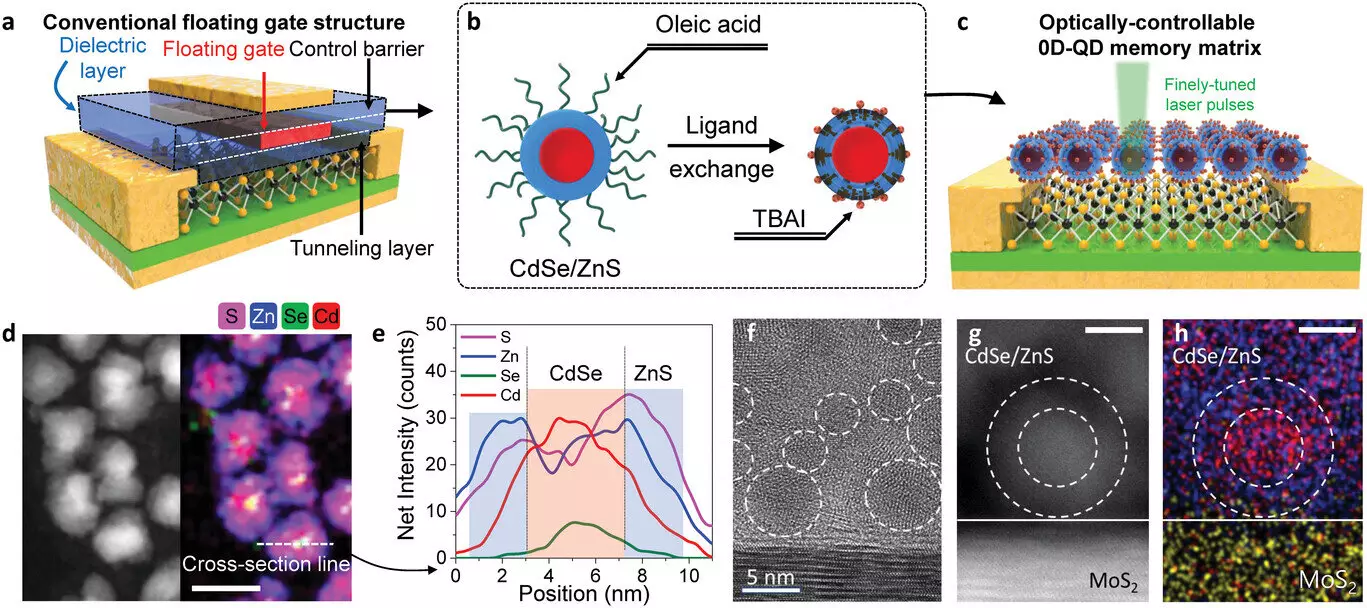We find ourselves in an era of immense data, where information flows incessantly. With the exponential growth in data, the energy consumption of data centers has become a major concern, contributing significantly to environmental pollution. Researchers worldwide have delved into the development of polygonal computing systems that consume less power and offer higher computational speed. However, these systems often fail to meet the demands of data processing due to their reliance on electrical signals, similar to traditional binary computing systems.
In an exciting breakthrough, Dr. Do Kyung Hwang of the Center for Opto-Electronic Materials & Devices at the Korea Institute of Science and Technology (KIST), along with Professor Jong-Soo Lee from the Department of Energy Science & Engineering at Daegu Gyeongbuk Institute of Science and Technology (DGIST), have unveiled a novel zero-dimensional and two-dimensional (2D-0D) semiconductor artificial junction material. This cutting-edge creation harnesses the power of light, offering the potential for next-generation memory.
To realize the vision of data processing using light, the research team successfully engineered a new 2D-0D semiconductor artificial junction material. By combining quantum dots in a core-shell structure with zinc sulfide (ZnS) on the surface of cadmium selenide (CdSe) and a molybdenum sulfide (MoS2) semiconductor, they achieved storage and manipulation of electronic states within the quantum dots, each measuring less than 10 nm.
When light interacts with the cadmium selenide core, a specific number of electrons flow out of the molybdenum sulfide semiconductor, resulting in the trapping of holes within the core, thus rendering it conductive. The electron state within the cadmium selenide undergoes quantization. Through intermittent light pulses, electrons are successively trapped in the electron band, inducing resistance changes in the molybdenum sulfide through the field effect. This cascading resistance alteration depends on the number of light pulses, enabling the material to maintain more than just binary states of 0 and 1, unlike conventional memory.
The inclusion of a zinc sulfide shell in the structure plays a vital role in preventing charge leakage between neighboring quantum dots. This shielding effect ensures that each individual quantum dot operates as an independent memory unit, eliminating interference from adjacent dots. In comparison to conventional 2D-0D semiconductor artificial junction structures, where quantum dots merely amplify signals from light sensors, the team’s quantum dot structure mirrors the functionality of the floating gate memory structure, showcasing its potential as a game-changing optical memory.
Demonstrating the effectiveness of the polynomial memory phenomenon, the researchers employed neural network modeling using the CIFAR-10 dataset. The results astounded the scientific community, as they achieved an impressive 91% recognition rate. This groundbreaking technology paves the way for a future where data processing is no longer limited by the constraints of electrical signals.
The digital landscape is evolving rapidly, driven by the relentless generation of data. The energy consumption of data centers, a consequence of this data explosion, has become a pressing environmental concern. Dr. Do Kyung Hwang and Professor Jong-Soo Lee, through their pioneering work, have introduced a paradigm-shifting solution to this problem. Their creation of a zero-dimensional and two-dimensional (2D-0D) semiconductor artificial junction material harnessing light as a means of data processing forward. The new material presents a glimpse into the future, promising lower power consumption and higher computational speeds. With the potential to revolutionize the concept of memory, this breakthrough technology opens new avenues for efficiently handling the vast amounts of data that define our modern world.



Leave a Reply